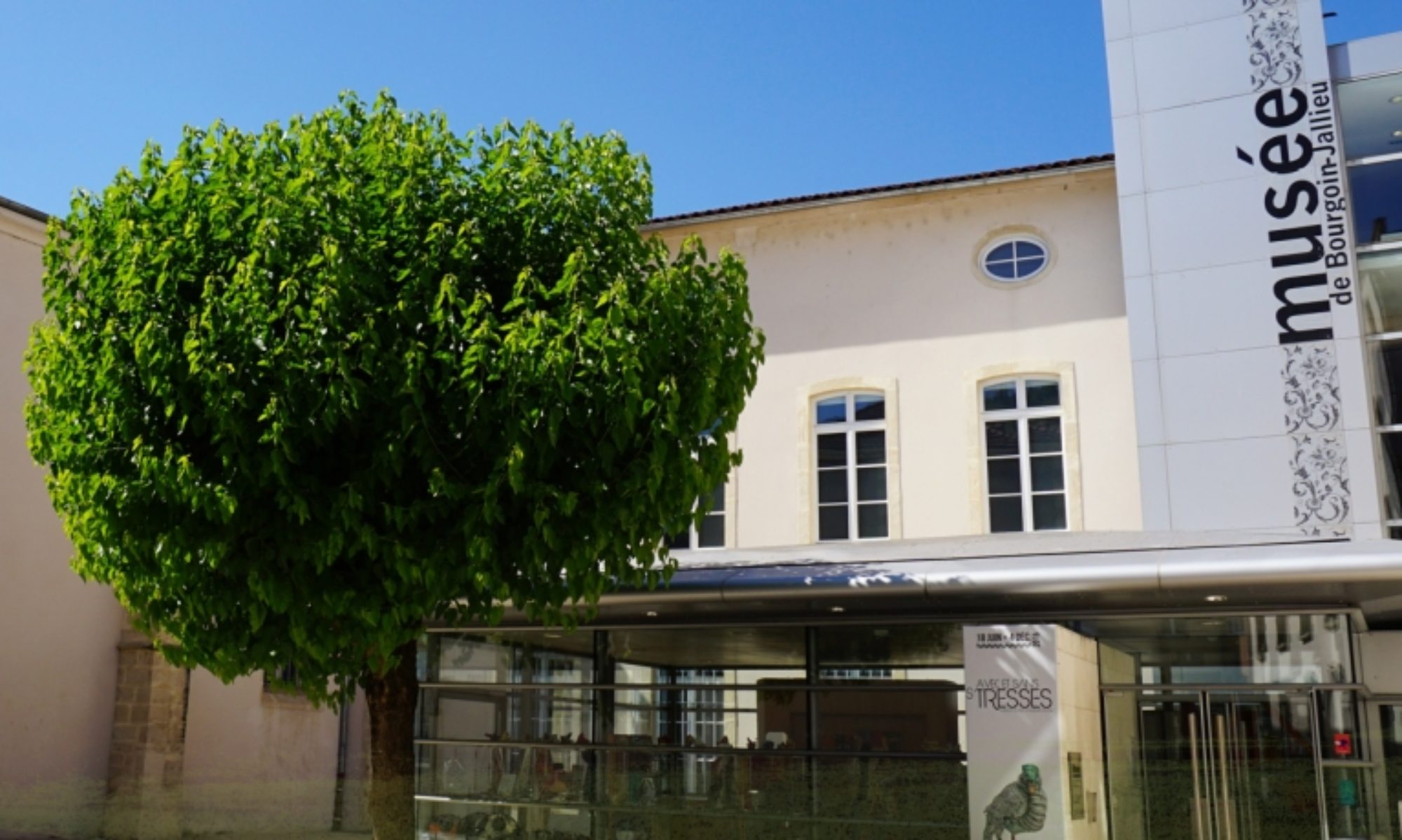This pair of “May I” pumps, made in Italy, features a stiletto heel and an open toe with two folded pleats at the front. The full exterior of the shoe is covered with printed silk satin. The design consists of small red feathers, closely set like scales.
This item was donated by the Roger Vivier fashion house as part of the exhibition Feathers: Motif and Spectacle, hosted at the Bourgoin-Jallieu Museum from April 29 to October 23, 2011. This exhibition explored the motif of the feather in textile printing, a motif that is also prominent within the museum’s own collection.
This acquisition is particularly interesting as the original gouache design of the pattern was already in the museum’s possession. Entitled “Mallard”, it depicts feathers in green and blue tones. Together, these two objects allow us to reconstruct the history of a motif, while also testifying to the commercial and industrial links between the various textile companies in the Rhône-Alpes region and the prestigious fashion houses they serve.
The original sketch and the Henry Dolbeau company
This gouache drawing is dated from the 1950s and comes from the textile archives of the Henry Dolbeau company. This fabric printing company was responsible for around 15% of the textile production in the Rhône-Alpes region between 1940 and 1960, before its closure in 1975.
Initially founded in Lyon in 1913, the company expanded in 1919 by opening a factory in Jallieu. It was an innovative company. Henry Dolbeau’s partner, engineer Louis Buynand, was the originator of zinc printing, a forerunner of the “lyonnaise” style of flat-screen printing. He was also the first to use a scraper for color application.
In 1923, owing to commercial disputes, the two partners separated. Their companies remained open, however, and Henry Dolbeau retained the Jallieu factory, which was renamed “Henry F. Dolbeau Establishments”. He made a number of investments that proved to be fruitful, particularly in technical areas. In 1930, this businessman felt that he had taken his company as far as it could go, a feeling that was only strengthened by the 1929 stock market crash in the United States. Anticipating the coming economic difficulties in France, he took the initiative of selling the company to the Gaudin family, who operated a dyeing and finishing plant in the city. Not having anticipated the recession, four years later they were forced to sell the fabric printing business. It is Henry Dolbeau who bought back their shares, for one quarter of the price he’d sold them for in 1930.
Gradually, the familial nature of the company was lost to a thoroughly capitalized industry. The company weathered the various textile and economic upheavals that punctuated the 1940s, and boasted a large production volume. But between the 1960s and 1970s, the market shrank considerably and the company was unable to cope. It was then acquired by the Lyon-based company Legrand, specialized in swimwear fabrics, before finally closing its doors in 1975.
An order from the Bucol company
Annotations on the sketch indicate that it was commissioned by Bucol, for whom Dolbeau carried out the photo-engraving of the two screens required to print the motif. The Bucol archives also contain a mold stamp and a silk satin “robrac” of this pattern, n°151 6895, presenting it in different colors including the red used for the pumps (a robrac is a set of fabric samples portraying the same pattern in different colors).
Bucol was founded in 1924 by Charles Colcombet and fabric manufacturer Claude Buchet. Based in Lyon, their textile creations would soon be marketed all over the world. The company produced fabric for Haute Couture houses and the high-end ready-to-wear market. It was an innovative company, which worked with artificial and synthetic fibers while also preserving the use natural fibers, frequently developing new yarns and spinning processes.
In 2001, Bucol became part of Holding Textile Hermès (HTH), contributing its weaving mill, its extensive knowledge and expertise and, above all, its immense archive of designs and fabrics. These were made available to Bucol’s clients, for whom the company would adapt and renew them.
The Roger Vivier pumps
In 2010, the Roger Vivier brand therefore turned to Bucol for the creation of the “May I” pumps.
The Roger Vivier House is a prestigious footwear house, founded by Roger Vivier (1907-1998). A native of Paris, this orphan underwent secondary education to which he attached little importance. In the hope of becoming a sculptor, he enrolled at the Paris School of Fine Arts. It was thanks to some shoe-manufacturing friends, who by chance asked him to sketch a few models, that he decided to start an apprenticeship as a boot-maker. In the 1930s, he frequented such venues as the Moulin Rouge, the Casino de Paris and the Folies Bergères and created his very first shoes for singers and actresses Mistinguett and Joséphine Baker.
In 1937, he opened his own fashion house in Paris at 22 rue Royale. Ava Gardner, Marlene Dietrich, Cary Grant, Jacky Kennedy and Elizabeth Taylor were among his clients. In 1953, he also began collaborating with Christian Dior, who entrusted him with the creation of the first pair of shoes for their Haute Couture house. This was the first time a fashion designer had ever coupled his name with that of a boot-maker. He was also the first Frenchman to work for the English royal family, designing the gilded and ruby-studded kidskin shoes that Queen Elizabeth II wore for her coronation.
Throughout his career, Roger Vivier invented and reinvented women’s footwear: in 1953, he created the rhinestone-studded Boule heel for Marlène Dietrich. The following year, he invented the stiletto heel by tapering the point of the heel from 8 cm to 6. In 1959, after extensive research to find the right balance between purity and tone, he created the Choc heel. This was followed in 1963 by the Virgule heel, the first letter of which echoes his own initial. Four years later, he launched the La Belle Vivier collection, featuring shoes with an emblematic metal buckle. Catherine Deneuve wore them during the shooting of Luis Brunuel’s Belle de Jour in 1967. Next was Brigitte Bardot, wearing the designer’s black thigh-high boots astride her Harley Davidson. In addition to creating new forms of heels, he also experimented with the ornamentation of his shoes, using materials such as silk, tulle, ribbon, pearls, gems, and even embroidery, usually reserved for hats.
The death of this designer in 1998 led to a decline in the brand’s prestige, which today is experiencing something of a resurgence.

